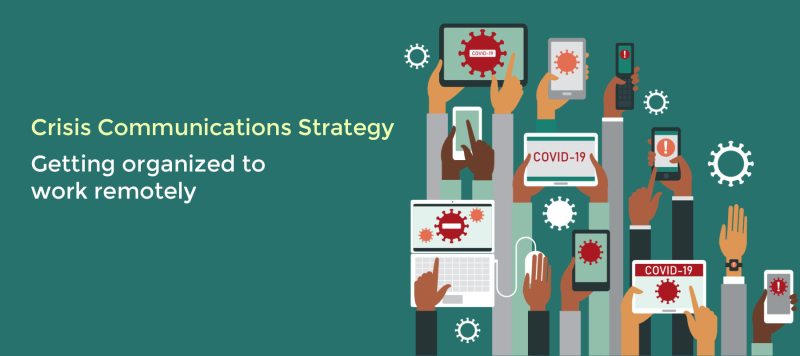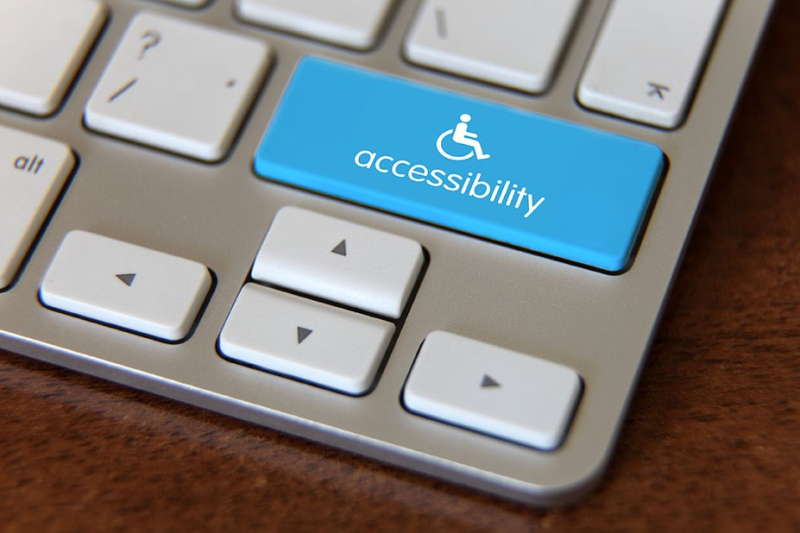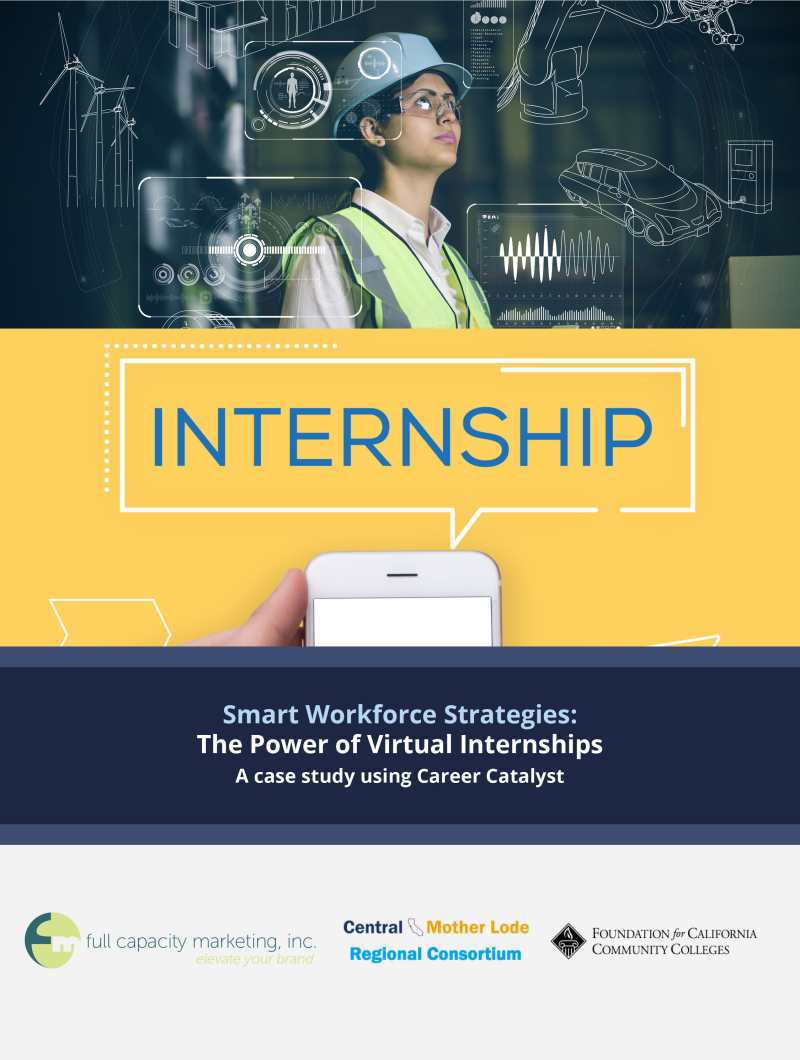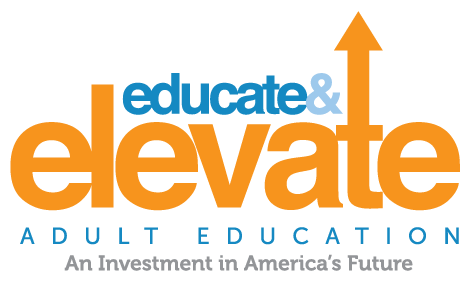Tag: education

Crisis Communications Strategy
With increasing self-isolation in response to COVID-19, a virtual team model is coming to the forefront for many workforce and education organizations that are accustomed to onsite service delivery for students, job seekers and employers.
With increasing self-isolation in response to COVID-19, a virtual team model is coming to the forefront for many workforce and education organizations that are accustomed to onsite service delivery for students, job seekers and employers. Here at FCM, we’ve operated using a virtual business model for 18 years, so we are lending our expertise to support workforce and education organizations with crisis communications planning and designing operational structures to maintain efficient communication both internally and with the public.
Here are strategies to keep communication relevant among your virtual staff:
- Identify technology platforms. Working from home, or some other remote location, means you will have to use platforms that help your workforce and education staff communicate in real time; plan to meet virtually with your team and customers/clients; manage projects online; and continue communicating regularly with your customers/clients. You may have other needs, so it’s best to start by making a list your team’s daily activities. Then, match the activities to the most appropriate platforms to make working remotely as smooth as possible for everyone involved. Email us for a pro bono consult about technology with FCM’s CEO.
- Schedule Monday morning meet-up. Using platforms like Zoom and GoToMeeting with webcams, keep regularly scheduled staff meetings every Monday morning to establish team priorities and identify team member roles. During this time when students are switching to online learning and workers are being laid off, discuss operational and communication bottlenecks and devise a cross-training plan to address areas of critical importance.
- Keep consistent business schedules. Nothing has changed in terms of servicing your customers with the huge exception that you now have to move to an online business model that requires even tighter communication protocols. Create a schedule of handling customer inquiries, assigned staff and the methodology for communication (e.g. hotline, text, email).
- Create communication protocols. It is critical to have individual team leads responsible for monitoring emails, social media and texts from customers. These leads need to have access to the people within your organization who can answer questions they on their own may not know how to answer. So it’s important that leads be in regular contact with your organization’s subject-matter experts to ensure information is accurate and timely—platforms like Slack can help with real-time internal team communications to alleviate email backlogs.
- Develop a Crisis Communications Plan (CCP). A CCP is an operational blueprint for how your organization plans to communicate to employees, stakeholders and the public you serve. FCM has created a template for what to consider when creating this plan. You may also schedule a pro bono consult with FCM’s CEO to discuss.
Share this article

Thought Leaders in Workforce, Education & Entrepreneurship

WORKFORCE AND EDUCATION ADVOCACY STRATEGIES IN THE COVID-19 ENVIRONMENT
Workforce and education organizations, like those in other sectors, have been hard hit by the coronavirus. They are scrambling to figure out virtual service delivery, new operational models and staff safety measures.
Workforce and education organizations, like those in other sectors, have been hard hit by the coronavirus. They are scrambling to figure out virtual service delivery, new operational models and staff safety measures. In the midst of this, they are also acutely in tune with any new legislation and funding trends pertaining to COVID-19 that may help support their mission.
For example, there’s the Relaunching America’s Workforce Act which proposes funding existing workforce development programs at the local level; the 650+ funders distributing more than 3,000 grants to those missions affected by the coronavirus; and state responses to appropriate additional funding for coronavirus-related tasks.
Policymakers and foundations are making quick decisions about which organizations to fund, and while workforce and education may seem like obvious choices, COVID-19 has affected many missions, including healthcare, poverty, food security and a myriad of others, all vying for funding.
However, these mission-focused organizations are not positive about what the future holds for funding. In a survey of nearly 550 nonprofits in 93 countries, conducted March 24-26, 96.5% of respondents reported negative impacts related to the virus, including a drop in contributions (67.9%). Among all respondents, 41% anticipate a drop in funding of at least 21% over the next 12 months; 18% expect to see a decline of between 16%-20%; and 12% anticipate a decline of between 11%-15%. Only 3% expect to see an increase in revenue.
The competition for funding will become even greater, which is why your workforce or education organization must take steps to clearly communicate the value of your mission to stay top of mind with policy makers and funders.
Best Practices: Advocacy & Communication
Advocate through virtual meetups with policymakers and funders
In this time of social distancing, organizations have had to execute advocacy strategies via a virtual format instead of conducting the usual face-to-face relationship-building activities. Sharon Bonney, executive director of the Coalition on Adult Basic Education, wasted no time shifting the national organization’s normal Capitol Hill Day to a virtual format in April, followed by an Advocacy April campaign. Prepping the 109 participants via webinar, Bonney said, “Those who had previously participated in our in-person Capitol Hill Day noted several advantages of going virtual outside of the obvious ones relating to work and travel. Many said they had an easier time getting in touch with legislators and staffers than they have for in-person meetings and noticed a more engaged focus during the meetings. The virtual format allowed a wider group to participate, including adult learners and teachers.”
COABE had more than 12,000 touches with policy makers via virtual meetings, phone calls and emails for their three particular asks:
- $692M for Workforce Innovation & Opportunity Act funding
- $1B related specifically with COVID-19
- A portion of the stimulus funding that has been pushed to governors through the Emergency Education Relief funding
Pay attention to how policymakers and funders communicate virtually.
Tag and follow relevant policymakers and funders who are active on Twitter, LinkedIn and Facebook to push advocacy messages. A campaign that caught FCM’s attention using this approach is the Malaria No More’s Stop the Buzz campaign, which uses an augmented reality filter to encourage social media users to literally use their voices to help end malaria prior to the United Nations General Assembly and the Global Fund replenishment.
Build your list of Twitter handles for U.S. Senators, U.S. House of Representatives and local elected officials. Once logged into Twitter, you can find a list of handles for U.S. senators here, and another for members of the U.S. House of Representatives here. The National Conference of State Legislatures provides a list of state legislative social media websites.
Communicate your organization’s proactive response to COVID-19.
It’s critical to proactively inform your customers, partners and funders about the operational changes you have made or are making in response to COVID-19. A best practice is to add a section to your website that is designated to COVID-19 information and to segment the information by audience (e.g., employers, jobseekers, students) to make it easier for your website visitors to navigate. Draw visitors to the new section of your site by adding across the top of your homepage a colorful banner that links to the new COVID-19 section of the website (see image of Full Capacity Marketing webpage below for example).
FCM helped the Workforce Development Board of Contra Costa County create a designated COVID-19 section on its website in April, when it launched BounceBackContraCosta.org. This approach helped WDBCCC move important on-site workshops – workshops that are required for the organization to qualify for federal Workforce Innovation & Opportunity Act funding – online when in-person workshops were no longer possible because of social distancing. The WIOA training video is now easily accessible online, and soon will be joined by other instructional videos, including one on resume-writing and another related the state’s job board.
A dedicated campaign paid off for the Workforce Development Board of Contra Costa. The new COVID-19 microsite launched in April, putting total impressions across Twitter, LinkedIn and Facebook at 11,600 – up 22,741% from the prior month! WDBCCC gained about 40 new followers across all of its platforms within 30 days.
Track and promote the positive impacts of any COVID-19 funding received by your organization.
As part of your dedicated campaign, include information about how the organization is utilizing any COVID-19-specific funding to rebuild the lives of those most affected. Translate the outcomes of the funding into a simple scorecard to place on your microsite. The scorecard could include highlighting the number of people served, types of services provided and results of the services.
Proactively push legislators and funders to the scorecard through social media and e-newsletters; they need to see the results of the funding and the positive impacts occurring within your community.
Provide a platform for your customers to share how your organization has helped them recover.
Feature the people and companies your organization serves on your campaign microsite, showcasing how your organization helped them recover from the financial impacts of COVID-19. FCM’s national workforce campaign developed for the National Association of Workforce Boards has been in existence since 2011 as an ongoing platform to share the stories, innovations and successes of the workforce development system.
This model can be replicated on your campaign microsite to highlight your customer successes. Let them tell their stories in writing or via video, which is preferred. Use Skype or Zoom to record them sharing their story. This format allows you to capture the emotion associated with overcoming COVID-19 obstacles thanks to the services your organization was able to provide as a result of new funding. Post the videos on your campaign microsite and on your YouTube channel. Share them on your social channels and be sure to tag the funder whose funding helped the customer.
Full Capacity Marketing can help you with your virtual advocacy efforts during this time of COVID-19. Check out our available services and schedule a consult with our CEO.
Like this article?
If you like this article we recommend downloading our eBook below to get better informed
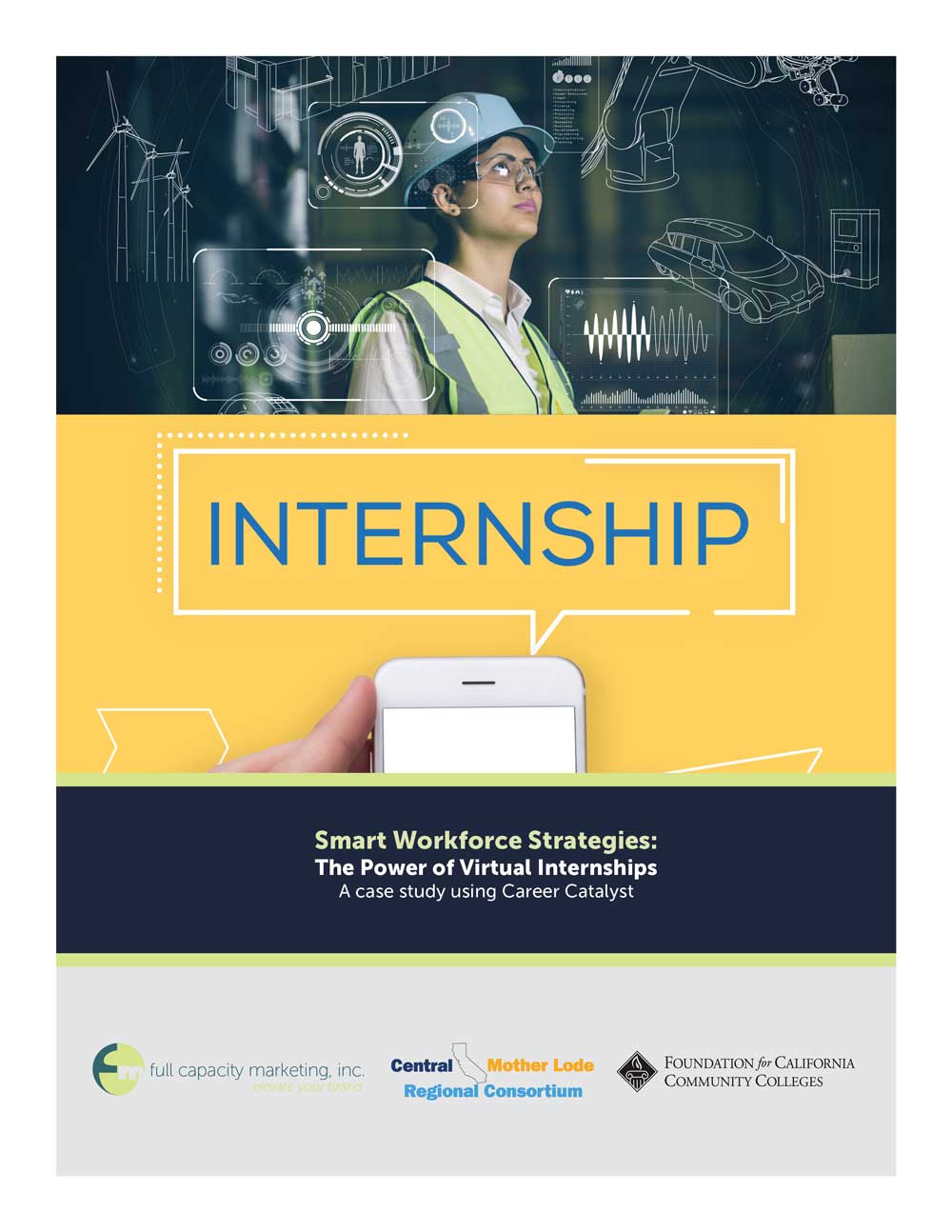
Smart Workforce Strategies:
The Power of Virtual Internships A case study using Career Catalyst
Share this article

Thought Leaders in Workforce, Education & Entrepreneurship

ARE YOU READY FOR YOUR MONITORS’ ADA-COMPLIANCE WEBSITE CHECK?
If you’re an organization funded by the Workforce Innovation and Opportunity Act (WIOA), you are likely gearing up for visits from Department of Labor monitors who will determine whether you are in compliance with the American With Disabilities Act (ADA).
If you’re an organization funded by the Workforce Innovation and Opportunity Act (WIOA), you are likely gearing up for visits from Department of Labor monitors who will determine whether you are in compliance with the American With Disabilities Act (ADA). Striving to eliminate the digital divide for individuals with disabilities, ADA applies to everything from website design and content, including videos and PDFs, to e-newsletters and other content published for public consumption.
Here are some other benefits of ADA compliance:
- Improves your search-engine presence – With limited budgets, workforce organizations often can’t afford paid digital ads to help with their search-engine presence (search engine optimization). An ADA-compliant website makes the site accessible to all and makes content more accessible (and indexable) to search engines.
- Enhances your brand – Given “universal access,” organizations funded by WIOA need a reputation that is representative of inclusiveness; this applies to communication mediums that inform and educate the public about employment and training services.
- Increases website usability – Following the Web Content Accessibility Guidelines makes web pages easier to understand and improves user experience to help visitors find information quickly.
- Creates a larger reach – Accessible e-marketing campaigns to inform job seekers and employers of employment and training solutions result in improved analytics such as click-through, view and open rates.
- Avoids unnecessary penalties – New content added to communication mediums after Jan. 18, 2018, must be accessible per ADA guidelines.
ADA Compliance: We can get you there
Full Capacity Marketing and its sister company, Business U, have combined their technology expertise to offer the workforce system simple compliance solutions for websites and e-marketing campaigns that are fully integrated into one platform.
The package includes:
- Bringing your organization’s website into ADA-compliance.
- Adding opt-in forms to capture contact information for prospective customers.
- ADA e-marketing campaign templates, with analytics.
- An unlimited number of database contacts.
Learn more about the foundation’s program to see how it could help you get on track to launching your own virtual internship.
Like this article?
If you like this article we recommend downloading our eBook below to get better informed

Smart Workforce Strategies:
The Power of Virtual Internships A case study using Career Catalyst
Share this article

Thought Leaders in Workforce, Education & Entrepreneurship

COVID-19 EDUCATION INNOVATIONS: HOW KERN COUNTY IS REVAMPING ITS RECRUITMENT AND RETENTION STRATEGIES TO ADJUST
In 2019, the Kern County Superintendent of Schools was awarded funding for a pathways improvement project to increase awareness of the K-14 high-skill job and career pathways in the county’s schools.
Switching Gears in the Face of School Closures
In 2019, the Kern County Superintendent of Schools was awarded funding for a pathways improvement project to increase awareness of the K-14 high-skill job and career pathways in the county’s schools. Middle and high school students, parents, and employers would be targets of a new outreach effort.
In early 2020, Full Capacity Marketing (FCM), working with the superintendent, was in the midst of developing an integrated multimedia campaign. The campaign would increase awareness of the in-demand/sustainable-wage jobs available in local communities and highlight the K-14 pathways in Kern County schools that prepare students to enter them.
With the swift onset and spread of COVID-19, which landed right before the start of the student recruitment season, when middle- and high-schoolers and their parents start making decisions about entering career programs, FCM knew adjustments would need to be made. Messaging, timing, and even the program focus would all be impacted by the pandemic, the measures rapidly going into place to fight it and the economic fallout.
Assessing the Changing Landscape
The impact of the worldwide pandemic on the economy, experiences, and opportunities for families in Kern County cannot yet be determined. But close analysis of the current and past crises can provide some clues.
FCM’s experience with education and workforce clients during the 2000-2001 “dotcom crash,” (the crash coincided with the first real efforts to launch online education) 9/11, and the 2008 financial crisis, gives us a framework to make some projections.
- Increased unemployment and lower incomes tend to be beneficial to people gravitating toward career education as the types of jobs in career pathways tend to be considered “safe.” We would, however, expect to see a shift in interest in industry clusters, depending on the details of the financial stimulus currently being considered in Congress.
- This is the third financial crisis that parents of middle-schoolers (mostly Millennials) have experienced in the last 20 years (most, if not all, of their adult lives). We can expect that this experience will shape their worldview.
- During financial crises, job loss tends to drive workers back to community colleges for career education. For middle-schoolers, this will mean more available role models, an important driver of interest in postsecondary education! (This is of particular importance in Kern County, which has a much higher level of residents who have a high school education or less than the state average).
- School closures and online learning for K-12 will have a significant impact on student success this school year. We don’t yet know the end result of this massive nationwide experiment in retooling our learning models. Still, a recent study comparing face-to-face with online learning leads us to believe that students with higher GPAs will perform even better in online courses while struggling students will perform worse.
- The above will be exacerbated by both student technology gaps and the short time frame between conception and launch of online learning initiatives. Longer learning curves for both teachers and students unfamiliar with the technology will hinder efficient learning. States and school districts are in the process of addressing this in various ways, but we expect wide levels of preparedness to enter or advance in high school grades.
- An additional issue working with this middle/high school audience is parental involvement. Online learning will exacerbate the difficulties that less-educated/less technologically advanced parents may have assisting their children with schoolwork. Childcare will be problematic, both for parents working from home and frontline workers suddenly faced with new childcare needs.
For at least the next few weeks, if not longer, these scenarios will play out across the country with results yet to be seen.
Getting Ready for A New Reality
While we, as yet, don’t know the full impact of the coronavirus crisis, we do know that at some time in the next few months, 11-, 12- and 13-year-olds will be preparing for their high school years and freshman and sophomores will be considering how to spend their final years in high school.
With that in mind, FCM shifted the Kern County campaign to focus immediately on building awareness among parents and students of the school system’s career education pathways programs as a whole through a strong, targeted social media campaign.
With the career pathways programs registration period coming up fast, FCM expedited the campaign website launch and is prepared to launch the awareness ad campaign within the next few weeks. Paid digital ads will be targeted to those zip codes where extensive job loss is anticipated or gains expected.
Because it is essential that students and parents are aware of the pathways programs and how to register, FCM will deploy a remarketing campaign later this summer that provides clear and usable information to students and parents. This will be complemented with a lead generation campaign to launch as the new school year approaches.
Careful monitoring of the news cycle and consumer sentiment reports, as well as the close ties FCM has with national, state, and local workforce boards, will allow for the rapid deployment of new strategies throughout the next six months to optimize the campaign. Adding career pathways, new opportunities, and adjusting to the new reality can be accomplished quickly with this early preparation and outreach!
If you need help positioning your organization amidst the changing educational landscape, contact Celina Shands at celina@fullcapacitymarketing.net.
Share this article

Thought Leaders in Workforce, Education & Entrepreneurship

SMART WORKFORCE STRATEGIES: A CASE STUDY IN VIRTUAL INTERNSHIPS
In today’s ever-changing labor market, companies need smart workforce strategies to maintain a competitive edge, and studies show internships can contribute to a company’s bottom line.
In today’s ever-changing labor market, companies need smart workforce strategies to maintain a competitive edge, and studies show internships can contribute to a company’s bottom line.
Retention rates are a major concern for employers across sectors. The National Association of Colleges and Employers’ (NACE) 2017 Internship and Co-op Survey reported that at the one-year mark:
- The retention rate for hires who had an internship with the hiring organization was 65.5%.
- The rate for hires who had other internship experiences was 52%.
- For hires with no internship experience, the retention rate was 46.2%.
Employee Benefit News (EBN) reports it costs employers 33% of a worker’s annual salary to hire a replacement when that worker leaves. That’s about $15,000 per person for an employee earning a median annual salary of $45,000, according to the Work Institute’s 2017 Retention Report.
You typically think of an internship as taking place at a business, but the digital age has made the virtual internship possible. In this case study, Full Capacity Marketing (FCM) partnered with the Foundation for California Community Colleges (Foundation) for support from its Career Catalyst program, a suite of services for organizations wanting to offer paid work experience. The foundation expanded its program to accommodate virtual internships, allowing FCM to hire nine interns under a contract with the Central/Mother Lode Regional Consortium, a group of 14 community colleges spanning the Central and Mother Lode regions of California.
Sound like something you and/or your employer partners would like to do? Learn more about the foundation’s program to see how it could help you get on track to launching your own virtual internship.
Download the full case study.
Like this article?
If you like this article we recommend downloading our eBook below to get better informed

Smart Workforce Strategies:
The Power of Virtual Internships A case study using Career Catalyst
Share this article

Thought Leaders in Workforce, Education & Entrepreneurship

CAMPAIGN CONTRIBUTES TO A $35M INCREASE IN ADULT EDUCATION FUNDING
Georgetown Center on Education and the Workfoce reports that by this year, 63 percent of all U.S. jobs will require education beyond high school. Yet, nearly half of the U.S. workforce— about 88 million adults aged 18 to 64— has only a high school education or less, and/or low English proficiency.
Georgetown Center on Education and the Workfoce reports that by this year, 63 percent of all U.S. jobs will require education beyond high school. Yet, nearly half of the U.S. workforce— about 88 million adults aged 18 to 64— has only a high school education or less, and/or low English proficiency. Adult education helps to close this gap and provide workers with the skills needed for the jobs of today and tomorrow, a key message that resonated across the countryas part of the Educate & Elevate Campaign.
For the past 14 months, the national Educate & Elevate campaign has brought together more than 55,000 adult educators to proactively educate policymakers about the importance of adult education and how it is an investment in America’s future. Leadership from the Coalition on Adult Basic Education (COABE), the National Council of State Directors of Adult Education (NCSDAE), 36 national-level partners, the state associations, professional development consortia and Dollar General effectively mobilized the nation in support of adult education through a campaign website, social media, communications toolkits and proactive outreach efforts.
“The Educate & Elevate campaign was created at a time when our adult education system expected a reduction of $87 million in funding,” said COABE Executive Director Sharon Bonney. “Our collective efforts resulted in more than 76,000 connections with legislators by individuals from the adult education field, resulting in a $35 million increase in funding.”
This funding is critical to individuals ages 16 and older who no longer are enrolled in school and are functioning below the high school completion level. Adult education programs not only teach these individuals the foundations of reading, math and English, they also equip learners with college and career readiness skills that lead to employment or the transition to postsecondary education.
“Adult education is a critical component to making sure America has the skilled workforce needed to compete,” said NCSDAE Executive Director and campaign partner Pat Tyler. “Surveys show that more than 90 percent of American businesses do not believe workers have the right skills; we have to ensure that all workers are ready to help employers compete.”
The campaign earned six 2017 Davey Awards for integrated campaign, its website and video. The campaign website offers education advocates tools and resources, infographics, videos, fact sheets and success stories, including a short documentary from PB’S “The Success Files.” Information about these tools, as well as how to access adult learning programs may be found here.
Share this article

Thought Leaders in Workforce, Education & Entrepreneurship
